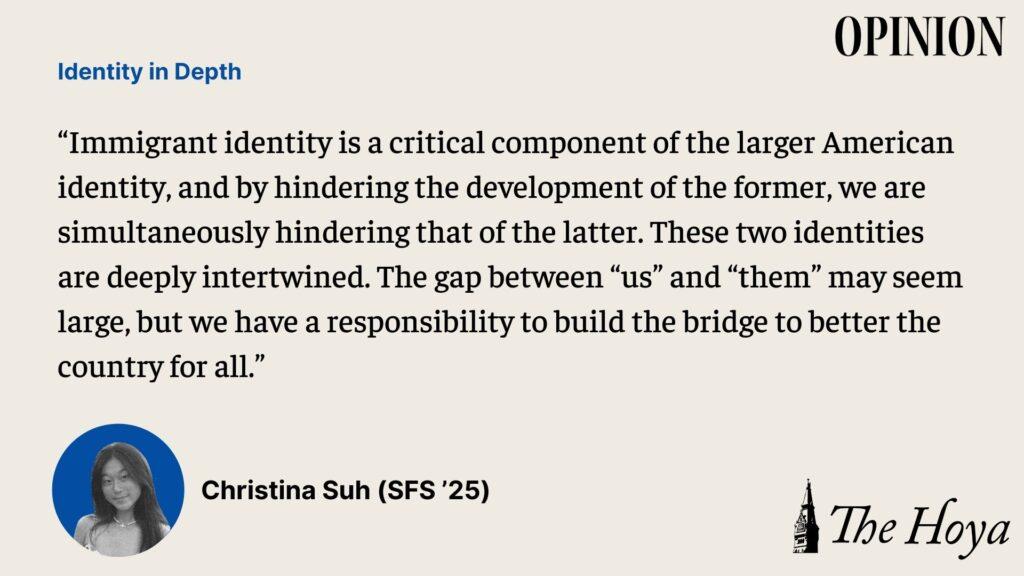Donald Trump made his stance on immigration clear when he reestablished the United States Citizenship and Immigration Services’ (USCIS) mission from “securing [its] promise as a nation of immigrants” to “securing the homeland [and] safeguarding its integrity.” Notoriously regressive efforts like his unwavering visions for a U.S.-Mexico border wall and brazen implementation of a Muslim travel ban further contributed to the obliteration of America’s reputation for being open-armed.
Now, more than a year past his inauguration, President Joe Biden still finds himself in the midst of his post-Trump cleanup where he aims to reverse the damages caused by his predecessor. The new administration has recreated USCIS’ image under a revised mission statement — one that replaces Trump’s degrading diction with more cordial parlance like “welcome” and “respect” to reflect Biden’s less cynical view towards immigrants. But will Biden take the initiative to translate those soft words into hard action?
In reality, the country needs change that extends beyond editing a mission statement. The immigrant community holds something substantive within its esoteric experiences, and the U.S. ultimately disservices itself by shrouding the opinions of this community in fear and distrust. As a nation that prioritizes its exceptionalism above all, this facet of immigration should intrigue even its most nativist fringes. We must work to shape an environment that better supports the assimilation and amplifies the voices of immigrants.
The U.S. sees its immigrants in a degradingly simplistic way. They are embodiments of utility, transplanted here to serve the most practical purpose facing the country at any given time.
This monolithic perception of immigrants is a product of U.S. history. At the height of the 19th-century industrial age, the U.S. opened its gates to an influx of foreigners who were myopically appreciated as outsourced labor that could help the economy. But these gates were slammed shut as soon as white Americans began viewing immigrants as a threat. Blatantly racist legislations like the Chinese Exclusion Act of 1882 exemplify America’s shamelessly exploitative perspective of immigrants. The Japanese internment camps of the 1940s further attested that immigrants were less respected than their “native” white counterparts.
Even with such heinous edicts repealed, victim-blaming sentiments continue to resonate today. The easiest response to nuanced domestic problems like U.S. unemployment is to look beyond its borders and place responsibility on the shoulders of immigrants, as this protects the sensitive paradigm of American exceptionalism. Such willingness to address these issues in the most expedient manner possible reveals the harsh reality that immigrants are perpetually trapped in their strictly practical roles even as the world around them changes. When the U.S. needed workers, they served as the dutiful industrial laborers. Now, when the U.S. needs an explanation for unemployment, they serve as scapegoats.
Therefore, while the U.S. reaps the benefits brought by these foreigners, it is unable to look beyond its rigidly utilitarian outlook. Trump-era rhetoric substantiated the idea that immigration taints the white canvas of America by “chang[ing] the culture.” When the person who is arguably the most powerful figure in the political world preaches such an ideology, immigrants internalize beliefs that they are unwelcome and conclude that the best way to assimilate into a close-minded society is to keep their mouths shut.
In order to develop even a semblance of belonging, immigrants are often forced to sacrifice a part of their identity — the part that diverges from the dominating norms of American life. Instead of fully assimilating, they put forth a facade of the person America wants them to be rather than the person they really are. This not only hinders the individual right of self-expression, but also jeopardizes the greater American ideal of freedom upon which the country has founded itself. Such hypocrisy is a greater threat to the nation than any possible threat caused by immigration.
Trump was correct in acknowledging that immigrants do, indeed, change the culture of our nation. But viewing this potential as corruptive rather than transformative implies the failure of the U.S. to embrace change. This cultural change risks toppling the current power hierarchy preserved in a culture that upholds white supremacy at the expense of its non-white Americans. There is much to learn from the ideas held by people from different environments and with different experiences, but the noise of ethnocentrism drowns out their voices.
Immigrant identity is a critical component of the larger American identity, and by hindering the development of the former, we are simultaneously hindering that of the latter. These two identities are deeply intertwined. The gap between “us” and “them” may seem large, but we have a responsibility to build the bridge to better the country for all.
Christina Suh is a first-year in the School of Foreign Service. Identity in Depth is published every other week.









